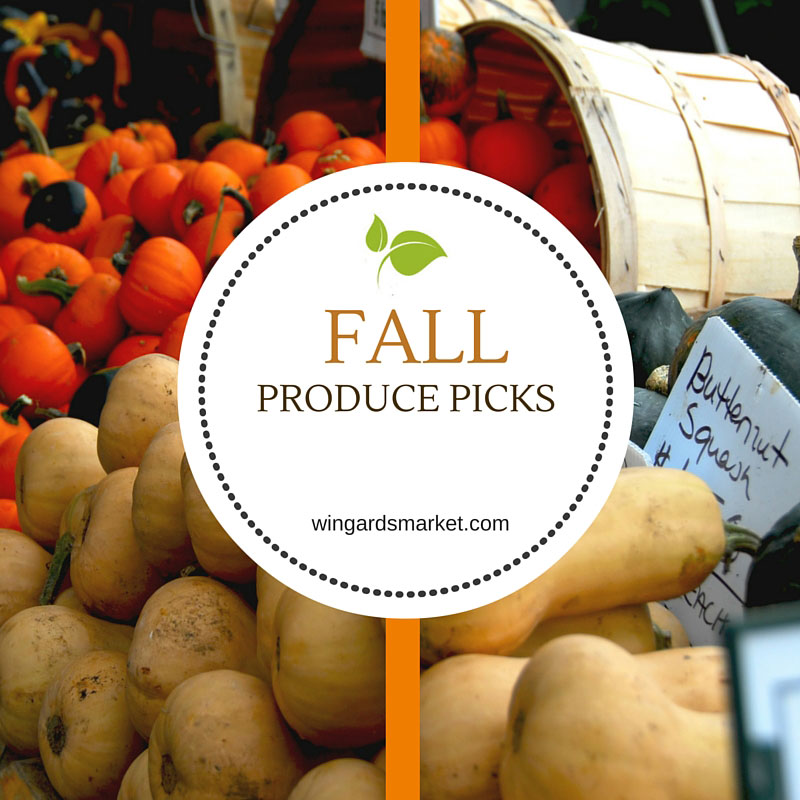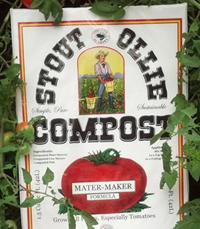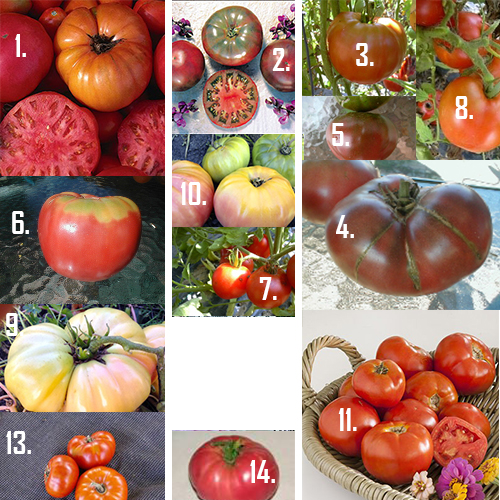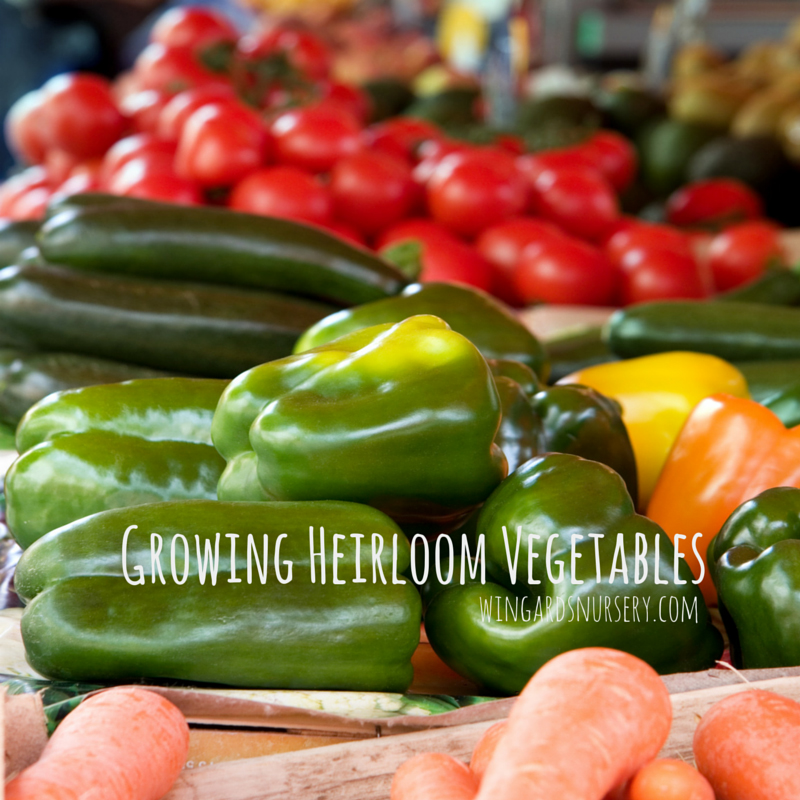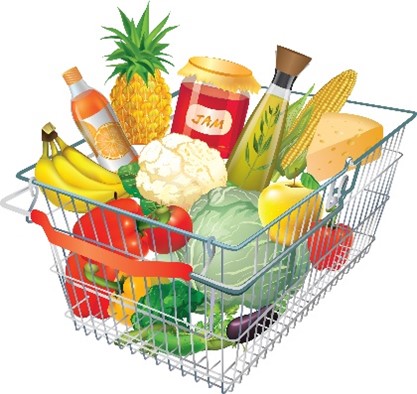 By Kathy Torres
By Kathy Torres
We spend a lot of time these days reading labels on food products for the health and safety of our families, and also to satisfy our taste buds. At Wingard’s Market, we continue to provide fresh produce and gourmet food items, with the same ideas in mind. We thought it might be a good idea to expand on some of the categories, labeling and certifications you will observe when you shop, for instance Heirloom, Hybrid, Organic, Non-GMO. You’ve probably become familiar with these terms in our market, as well as your local grocery store, but maybe you have found them to be a little confusing.
Heirloom vegetables are old varieties that have been passed down from generation to generation. Native Americans have been saving seed since the pre-Columbian era while old European crops may be over 400 years old. They have a history, and are a tribute to families who have planted, harvested and passed the seeds on. To be capable of being saved, all heirloom seed must be open-pollinated, so that it will grow true to seed. Open-pollinated plants are nearly identical to the parent plant because it (the parent plant) was pollinated by wind, birds, or insects—not from a neighboring plant. The big advantage of OP plants is that gardeners can save their own seed. If you grow an Heirloom variety you particularly enjoy, that does exceptionally well in your garden, it is nice to be able to save some seeds, plant the same variety next season and enjoy the same results. The more you save the seeds and replant, the better adapted future plants will be to your growing conditions. While Heirloom vegetables are grown for their superior flavor, they typically have a shorter shelf-life and may not be as disease resistant as hybrid varieties.
A Hybrid vegetable is created when plant breeders intentionally cross-pollinate two different varieties, with the intention of producing an offspring that contains the best traits of each of the parents. Pollination is carefully controlled to ensure that the right plants are crossed to achieve the desired combination of characteristics, such as dependability, early maturity, bigger size, higher yield or better disease resistance. Seed from hybridized plants tends to revert to the qualities of the parents, so saving the seed and replanting is not advisable. Hybrid seeds/plants should not be confused with genetically modified (GMO) seeds/plants, which have been genetically altered using molecular genetics techniques such as gene cloning and protein engineering.
Organic is a certification that indicates that the food has been produced through U.S. Dept. of Agriculture approved methods. These methods integrate cultural, biological, and mechanical practices that foster cycling of resources, promote ecological balance, and conserve biodiversity. Synthetic fertilizers, sewage sludge, irradiation, and genetic engineering may not be used.
With some minor exceptions, organic meat, eggs, and dairy products come from animals that are not given antibiotics or growth hormones. While the term “natural” can be used on any product label without third party verification, a product must be certified by USDA if it is to be labeled as “organic.”
The emphasis is on farmers using renewable resources and mimicking natural ecosystems to conserve and maintain the soil and water without polluting the environment. Some examples of organic farming practices include using compost, manure, and crop rotation to keep the soil healthy naturally. The healthy soil helps keep the plants resistant to disease and pests. Crops are usually grown according to the climate and organic farmers often grow a variety of crops instead of one. While organic farming doesn’t allow many dangerous chemicals to be used, certain pesticides derived from natural sources are allowed in producing organically grown food. Organic farming helps to prevent soil erosion and protects local wildlife, streams and watersheds instead of conventional farming which can harm local ecosystems with chemical fertilizers and pesticides. For additional information, go to this USDA webpage. What is Organic.pdf (usda.gov)
The use of genetic engineering, or genetically modified organisms (GMOs), is prohibited in organic products. This means an organic farmer cannot plant GMO seeds, an organic cow can’t eat GMO alfalfa or corn, and an organic soup producer can’t use any GMO ingredients. To meet the USDA organic regulations, farmers and processors must show they aren’t using GMOs and that they are protecting their products from contact with prohibited substances, such as GMOs, from farm to table.
Non-GMO suggests that all ingredients were derived from plants, animals, or other organisms whose genetic material has not been artificially altered in a laboratory. Meat, poultry, dairy and eggs with a Non-GMO claim are from animals that were not fed a diet containing genetically engineered crops. Non-GMO, however, is NOT certified by the USDA. As indicated above, all certified Organic foods are Non-GMO, however, all Non-GMO foods are not necessarily Organic. For more details on recent USDA allowances and labeling regarding Non-GMO foods, click HERE.
Food is complicated and highly regulated, but for good reason. The more you know and understand, the better equipped you are to make decisions on what you grow in your garden and what you buy for you and your family to eat.
Here are additional resources for more on this subject:
Heirloom Vegetables | Home & Garden Information Center (clemson.edu)
GMO Crops, Animal Food, and Beyond | FDA


